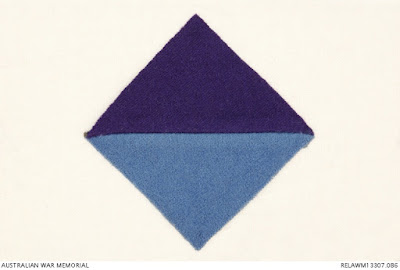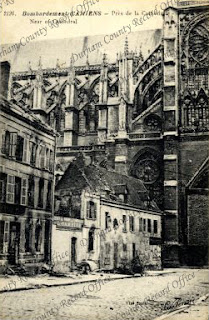The school holidays are nearly over, but there's still a bank holiday and a last week or so to get through, so what tips are there from 100 years ago? Margaret Osborne had some ideas in the Durham Chronicle edition of 24 August 1918:
 |
| D/CL 27/277/346 Horden Railway c.1915 |
While grown-up people find their holidays growing shorter or vanishing altogether as war goes on, school-children’s vacations get longer, and how to occupy their children for six or seven weeks has become somewhat of a problem to many mothers. It is not often possible to take the whole family to the seaside as we did in peace-time. Fathers are in the army or doing work they cannot leave; mothers find it hard to interrupt their war-work, travelling is dear and difficult, and the food problem is more troublesome in lodgings than at home.
Day-excursions are hampered by a restricted train service and lack of petrol, and though bicycling is pleasanter now that the roads are comparatively clear of motor-traffic, most bicycles bought four or five years ago are now liable to require repair if a whole day’s run is attempted. The ‘restful holiday’ soon palls upon strong young people or small children intent on exploring a world that is new to them, especially when it is not punctuated with holiday treats in the way of food.
 |
| D/DLI 2/4/383(1) Photograph of people fixing a bicycle, pre-1914 |
A Little Ingenuity
There would seem to be little left, but the ingenious mother of a family, or the mother of an ingenious family, will arrange a holiday nevertheless. The first requisite of a holiday is change, and those of us who cannot have a change of scene may well try a change of hours. Most people’s enterprise in this direction goes no further than taking breakfast an hour later than usual, a proceeding that reminds us more of Sunday morning or convalescence from an illness than of holidays. To remove this, practise getting up at five o’clock, having an early crust of bread or cup of tea, and walking or bicycling from six to nine meets the case much better.
Personally, I should begin an hour earlier than this, starting when the towns and villages are just waking up, the field labourers going to their work, all the wild birds and animals much more in evidence than later in the day. A picnic breakfast at nine o’clock can generally be managed by means of coffee in a thermos flask if everyone will carry his own mug. To breakfast with friends at the end of your three hours’ journey is also pleasant, but this cannot, of course be a “surprise” party and would entail carrying one’s rations. If all that can be done in an hour and a half’s journey out and then home to a picnic breakfast in one’s own garden, it is quite worth doing, and most people will find that their own neighbourhood looks surprisingly unfamiliar three hours before breakfast.
 |
| D/DLI 2/4/383(3) Photograph of people messing about fixing a bicycle, pre-1914 |
The Holiday of Usefulness
Every school-boy and girl who lives in the country or within reach of the country will, of course, be making collections this autumn. Blackberries and whortleberries for jams, nuts for winter consumption, acorns and beech – mash for pigs, acorns again for the neighbour’s rabbits or the village rabbit club, hay made from wayside grass and weeds for rabbits. Nuts are specially important because if they are gathered when ripe they can be shelled and stored in tins and the shells sent to the national collectors. They will then be used to make charcoal for anti-gas masks for our soldiers, if there is no collecting depot near, they can be sent carriage forward to the Gas Works, Southend. No child will have had a good holiday who has not done some war-work, whether by means of collections or other personal service, and this is a way in which a whole family of different ages may work together. Looked at in this way, it can give points to cricket. For anyone now is a little bit ashamed to play unless he has been fighting or working.












